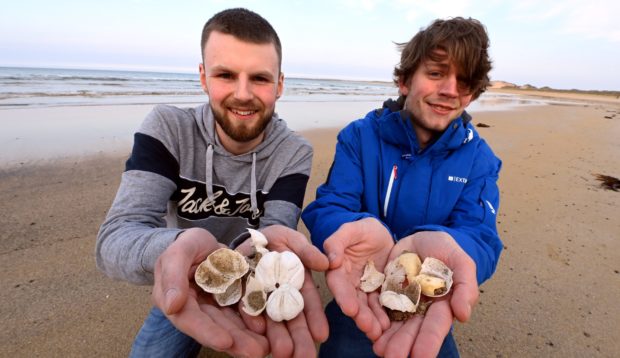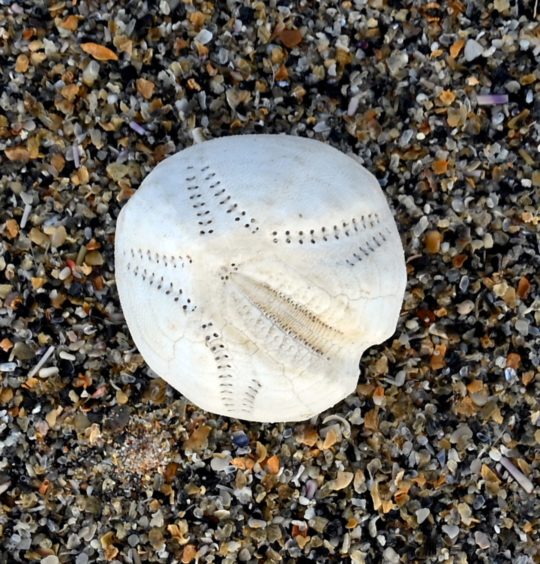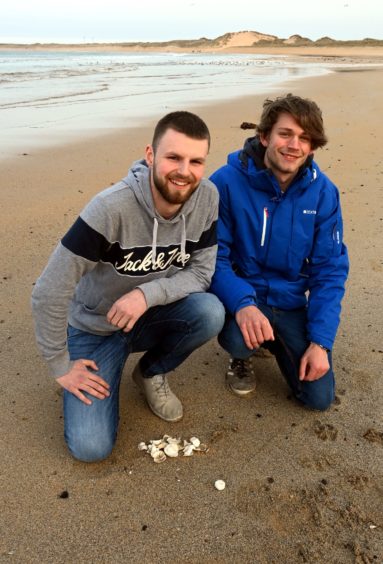Hundreds, if not thousands, of bizarre, hollow orbs which washed up on a north-east beach this week have been baffling locals.
The unusual grey heart-shaped shells drifting ashore at Fraserburgh have had many walkers scratching their heads over their unusual appearance and sheer amount.
The odd little orbs, covering much of the beach, are actually the ghosts of a species of sea urchin, Echinocardium cordatum, often fondly referred to as “sea potatoes”.
In effect, the beach has become a graveyard for the urchins’ hollow remains, whose Latin name translates literally to “spiny heart,” in a fitting nod to their unusual shape.
“They were really quite unusual”
The unique creatures’ remnants caught the attention of 22-year-old Elliot Findlay, and his friend Ryan Chalmers this week as they met for a walk on the beach.
Mr Findlay, who works at Saplinbrae Hotel And Lodges, almost took one home to Stuartfield but instead looked up the strange find online.
He said: “There was a man on the beach and he had noticed all these shells on the beach and asked if we had any idea what they were.
“I hadn’t noticed them at first and it wasn’t until he pointed them out that we both thought ‘wow’. They were really quite unusual.
“There wasn’t anything inside. They were hollow, so my pal took one home.
“It did seem a really unusual sight and we wondered why there were so many of them. We knew it was some sort of animal but were shocked to see quite so many of them…hundreds if not thousands.”
Look like a baseball
The Wildlife Trust says the medium-sized urchins usually live in burrows in the sand and sea bed.
They are covered in beige spines, which give them a furry appearance and have tube ‘feet’ that they use to feed on dead animals and plants. When they die their empty shells have a white, brittle appearance, sometimes described as looking like a baseball.
To make their homes, these sea urchins use the spoon-shaped spines on their undersides to plough through sediment on the ocean floor. Because the long, soft bristles on their backs can poke tiny holes through the surrounding sands, they are still able to breathe in these burrows, which are typically a few inches deep.
While the urchins are alive, these furrowed yellow spines cover most of their bodies, resembling a fine shag rug.
But they rarely live more than ten years in the wild and when they die, their delicate spines fall away, leaving a hollow husk, or “test,” that can wash ashore completely bare.
These dried-up remnants—brittle and white, grey or brown in colour—give the sea potato its common name.
Mass strandings, such as the one in Fraserburgh, are apparently not that uncommon, and often happen when sea urchins come together to breed in the spring.












